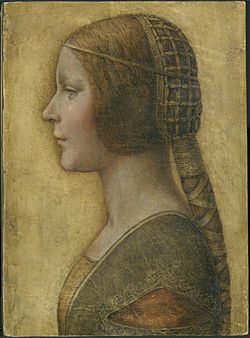Provenance facts for kids

Provenance (pronounced PROV-uh-nans) comes from a French word meaning 'to come from'. It's the full story of an object's life, from when it was made or found, through all its owners, to where it is now. Think of it as a detailed timeline for a historical item.
While provenance was first used mostly for works of art, it's now important in many other areas. This includes archaeology (studying old things), paleontology (studying fossils), and even for old manuscripts, books, and scientific items.
What is Provenance?
The main reason we trace an object's provenance is to understand its past. By knowing its history, we can learn about its original creation or discovery. This helps us confirm if an object is real or fake. It's like checking a product's journey from the factory to the store.
Finding out an object's provenance mostly involves looking at documents. These might be old letters, sales records, or museum logs. This practice became common in the 1780s. Provenance is similar to the legal idea of a chain of custody, which tracks who has had control of an item.
Why Provenance Matters
For museums and people who buy and sell art, provenance is super important. It helps them figure out who made an object and if it's truly authentic. But it also helps make sure that the object was obtained fairly and legally.
This became a big concern after World War II. Many artworks were taken unfairly from their owners in Europe. Museums now carefully check the history of such works. More recently, similar concerns have grown for African art and ancient items from places like Iraq and Syria, which were sometimes taken illegally.
Provenance vs. Provenience
In fields like archaeology and paleontology, you might hear a similar word: provenience (pronounced PROV-ee-en-s). This word has a special meaning. It refers to the exact spot where an ancient object or fossil was found. Modern research records this location very precisely, often in three dimensions.
So, an artifact can have both a provenience (where it was found) and a provenance (its complete history of ownership and location).
Images for kids
-
Sir William Petre, 1567. This portrait was later owned by John, 1st Baron Lumley, as shown by the small paper added to the painting. It is now in the National Portrait Gallery, London.



